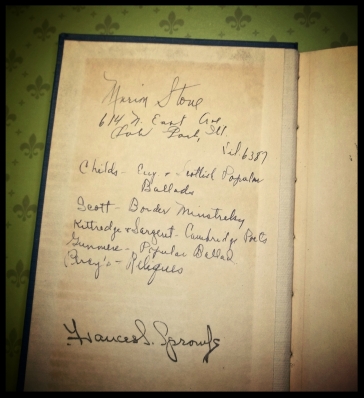Another great year of reading has passed. With just a few days to spare, I achieved my Goodreads Reading Goal for 2016. I read 35 books (for a total of 10,854 pages). Not bad considering my crazy busy schedule and obsessive knitting habit!
It seems only fitting to hand out some Reading Awards for my year in books:
Favorite Read
Harry Potter and the Cursed Child by John Tiffany and Jack Thorne
It may not have been the novel we were hoping for, but the script for a stage play was more than enough for me. Revisiting Harry Potter’s world was not only welcomed, but a strong reminder of why we loved it in the first place.
Biggest Surprise
The Chemist by Stephenie Meyer
I’m not a huge reader of thrillers, so it was surprising in an of itself to pick up Stephenie Meyer’s latest book. As a fan of her previous works, I decided to give it a shot and I’m glad I did. Meyer is fantastic at constructing relationships between characters and creating a world for the reader to escape to and experience with those characters. This is a thriller for girls and all it asks of you is to let go of reality and enjoy the ride.
Biggest Disappointment
Conversion by Katherine Howe
I had a high hopes walking into this one as I love Howe’s previous novels (in particular, The Physick Book of Deliverance Dane). However, her YA effort never really got off the ground. While the premise of a mysterious illness sweeping a private school is intriguing, especially with supernatural undertones, the story trudged along without any sense of resolution.
Best New Series
The Lunar Chronicles by Marissa Meyer
I haven’t read the last book of the series, yet, but the first three easily qualify as among the best reads this year. Meyer’s unique twist on fairytales, gives the genre a new place to operate and it is so much fun. Who would have thought Cinderella could be a cyborg?
Best Continuing Series
Journey to Munich (Maisie Dobbs #12) by Jacqueline Winspear
I fell in love with this series a few years ago and the latest installment did not disappoint. The continuing journey of Maisie is one worth following as she hones her natural skills as a detective and navigates the stormy waters of grief.
Best Recommended Book
Outlander by Diana Gabaldon
A friend gave me a copy of Outlander and insisted I read it. Wow! It was beyond fantastic! I know I’m way behind the rest of the world on this one, but I’m catching up!
Favorite New (To Me) Author
Charlie Lovett
The Bookman’s Tale turned out to be one of my favorite books in 2016. The main character was not only relatable to me as introvert, but his emotional journey as a widower was beautifully drawn. Add in a Shakespearean mystery and you’ve got an incredible read!
Most Emotional Read
Me Before You by Jojo Moyes
I didn’t just cry, I bawled. This is one of the most moving, humorous, and heartfelt novels I’ve read in a long time. The sequel, Me After You is just as good.
Best Non-Fiction
Creative Schools by Sir Ken Robinson
As an educator looking to revitalize the classroom, Robinson is must-read material. His latest provides enlightening and thought-provoking ideas on how to give public education a much-needed facelift.
My full reading list for 2016 can be viewed on My Bookshelf.
The Year Ahead:
I’m already constructing my To Read pile for 2017. So far, these are the titles I’m most excited to read:
Winter (Lunar Chronicles #4) by Marissa Meyer
Heartless by Marissa Meyer
Tales from Shadowhunter Academy by Cassandra Clare and others
The Bane Chronicles by Cassandra Clare and Sarah Rees Brennan
In This Grave Hour (Maisie Dobbs #13) by Jacqueline Winspear
Dragonfly in Amber (Outlander #2) by Diana Gabaldon
– – –
How was your reading year?
– – –
c.b.w. 2016













